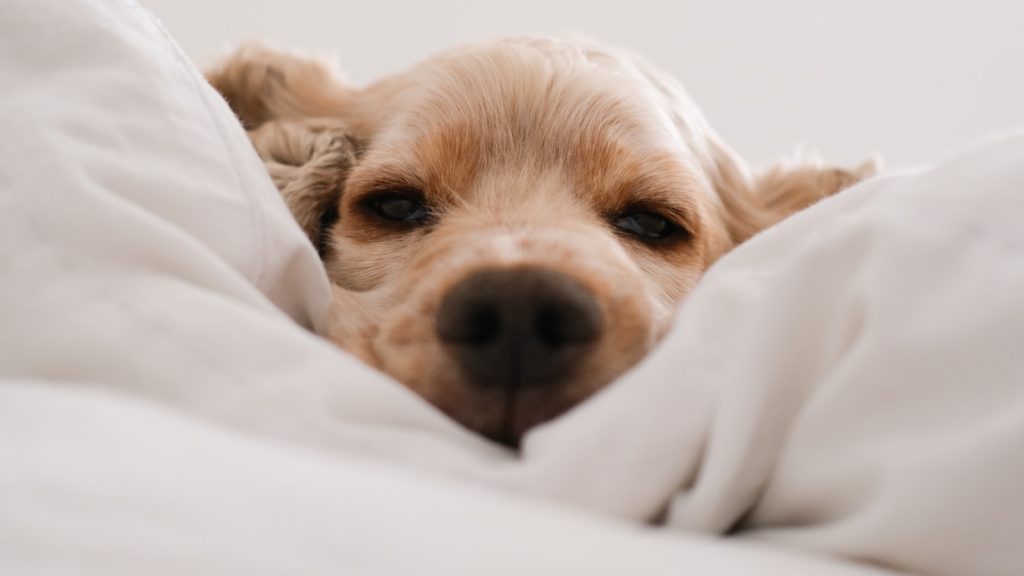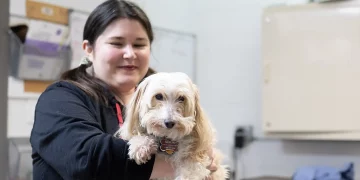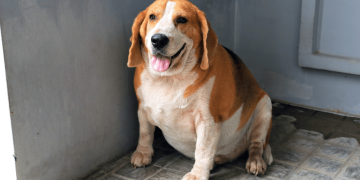Separation anxiety is a common issue that affects many pets, especially dogs, but cats can also suffer from it. Pets with separation anxiety experience distress when their owners leave them alone or are out of sight for an extended period. This can manifest in various behavioral problems, such as excessive barking, destructive behavior, urination or defecation indoors, and even self-injury. Understanding how to help your pet overcome separation anxiety is crucial for both their emotional well-being and the peace of mind of their owners.
In this article, we will explore the causes of separation anxiety, how to recognize it, and practical strategies to help your pet cope with being alone.
1. Understand the Causes of Separation Anxiety
The first step in helping your pet overcome separation anxiety is understanding what may be causing it. Separation anxiety often stems from several factors, including:
a. Early Life Experiences
Pets that were adopted from shelters or had traumatic experiences during their early life may have a greater risk of developing separation anxiety. The absence of their primary caregiver can trigger distress due to a lack of trust in their environment or fear of abandonment.
b. Changes in Routine or Environment
Major life changes, such as moving to a new home, the arrival of a new family member (human or animal), or even a change in work schedule, can disrupt your pet’s sense of security and lead to anxiety.
c. Lack of Socialization
Pets that are not well-socialized or have not been exposed to being left alone gradually may have difficulty adjusting to being separated from their owners.
d. Medical Conditions
Some medical conditions, including cognitive dysfunction syndrome (similar to dementia in humans), can lead to increased anxiety in older pets. Pain, discomfort, or illness can also cause behaviors that resemble separation anxiety.
2. Signs of Separation Anxiety in Pets
It’s important to be able to recognize the signs of separation anxiety in your pet so that you can take the right steps to help them. Some common signs include:
a. Destructive Behavior
Pets with separation anxiety may chew furniture, tear up carpets, or destroy personal items in an attempt to cope with the stress of being alone. Dogs might chew on doors or windows as they try to escape.
b. Excessive Vocalization
Excessive barking or meowing when left alone is a classic sign of separation anxiety. This behavior may occur immediately after the owner leaves and can continue for an extended period.
c. Urination and Defecation
Pets with separation anxiety may urinate or defecate indoors even if they are usually house-trained. This can be a response to stress or a lack of control when they feel anxious.
d. Pacing and Restlessness
Some pets may exhibit pacing or appear agitated when they are left alone. They may continuously circle or show signs of distress as they wait for their owner to return.
e. Attempts to Escape
Dogs and sometimes cats may try to escape from rooms, crates, or enclosures when they are left alone. This could involve scratching doors, windows, or fences in an attempt to reunite with their owner.
3. Strategies to Help Your Pet Cope with Separation Anxiety
There are several strategies and approaches you can take to help your pet overcome separation anxiety. These methods focus on gradually desensitizing your pet to being alone and providing them with the support they need to feel safe and secure.
a. Gradual Desensitization
One of the most effective ways to help a pet with separation anxiety is through gradual desensitization. This involves slowly getting your pet accustomed to being left alone in a controlled and structured manner.
- Start small: Begin by leaving your pet alone for short periods, such as 5 to 10 minutes. Gradually increase the time you are away, but be sure to start with a manageable duration.
- Avoid making a big deal about departures and arrivals: Overly enthusiastic greetings or long farewells can increase your pet’s anxiety. Instead, remain calm and low-key when you leave and return home.
- Use departures and arrivals as training opportunities: Regularly practice leaving and returning in different scenarios (e.g., when your pet is lying down or calm), so they don’t associate your comings and goings with anxiety.

b. Provide a Safe and Comfortable Space
Creating a safe and comfortable environment for your pet can help reduce their anxiety when they are left alone. Here are some ideas:
- Crate Training: Many dogs find comfort in a crate, as it offers them a den-like space where they can feel secure. If crate training is done correctly, it can be an effective way to help pets with separation anxiety.
- Designate a quiet room: For both dogs and cats, it can help to designate a quiet, cozy room as their “safe zone” when you leave the house. Make sure the area is equipped with comfortable bedding, toys, water, and a few treats.
- Use calming products: Products such as calming sprays, diffusers (like Feliway for cats or Adaptil for dogs), or anxiety-reducing wraps (like Thundershirts) can create a soothing atmosphere that helps reduce stress.
c. Increase Physical and Mental Stimulation
One of the reasons pets may become anxious when left alone is a lack of physical and mental stimulation. Engaging your pet in exercise and play can tire them out and reduce anxiety.
- Interactive toys: Provide toys that engage your pet mentally. Puzzle feeders or toys that dispense treats can keep your pet occupied for longer periods while you’re gone.
- Exercise: For dogs, ensure they are getting enough exercise before you leave. A long walk, playtime in the yard, or a fun training session can tire them out and make them less likely to experience anxiety while you’re away.
- Cat enrichment: Cats also benefit from having things to do when you are not home. Use interactive toys, treat puzzles, or cat trees to provide entertainment and reduce stress.
d. Use Positive Reinforcement
Reinforce calm behavior when your pet is left alone, rather than focusing on their anxious behavior. Positive reinforcement can help your pet associate being alone with positive experiences.
- Reward calmness: When your pet is calm and relaxed, even when you are about to leave or have just returned, reward them with treats or praise.
- Avoid punishment: Never punish your pet for showing anxiety-related behaviors, such as urination or chewing. Punishment can increase fear and exacerbate the anxiety.
e. Provide a Familiar Scent
Pets often feel comforted by familiar scents, especially their owner’s scent. When leaving your pet alone, you can leave them with an item that smells like you to provide comfort.
- Clothing or blanket: Leave a piece of clothing, such as a worn t-shirt, or a blanket with your scent in your pet’s safe space. This can make them feel more secure while you’re away.
f. Consider Professional Help
If your pet’s separation anxiety is severe or doesn’t improve with your efforts, it may be time to seek professional help. A veterinarian, veterinary behaviorist, or certified dog trainer can offer additional support.
- Consult a vet: A veterinarian may be able to rule out any underlying health issues and provide recommendations. In some cases, anti-anxiety medication may be prescribed temporarily to help ease your pet’s distress.
- Behavioral therapy: Professional trainers or behaviorists can develop a personalized plan to help your pet with separation anxiety, using proven techniques and behavioral interventions.
g. Medication and Supplements
In more severe cases, medication or calming supplements may be prescribed by your veterinarian to help alleviate anxiety. These can be used in conjunction with behavior modification techniques.
- Medications: There are prescription medications available to help manage separation anxiety in pets. These should always be used under the guidance of a veterinarian.
- Calming supplements: Natural supplements like pheromone diffusers, calming chews, or herbal remedies can sometimes help ease your pet’s anxiety. Always check with your veterinarian before using any new products.
4. Preventative Measures
It’s easier to prevent separation anxiety than to deal with it once it has developed. Here are a few preventive measures to help your pet remain comfortable when alone:
- Get your pet used to being alone early: If you have a puppy or kitten, start introducing short periods of alone time to build their confidence and reduce the risk of separation anxiety later in life.
- Establish a consistent routine: Pets thrive on routine. Try to keep your comings and goings consistent so your pet doesn’t become anxious when the schedule changes.
Conclusion
Separation anxiety can be distressing for both pets and owners, but with the right approach, it is possible to help your pet overcome their fears and become more comfortable being left alone. The key is patience, consistency, and a combination of behavioral techniques, positive reinforcement, and environmental management. If your pet’s anxiety persists or worsens, consider consulting with a veterinarian or a professional behaviorist who can help you develop a more tailored plan. By addressing separation anxiety early and with care, you can create a more relaxed and secure environment for your pet.























































